Wedding Ceremony Ideas Non Religious: Creative and Inclusive Celebrations
Weddings are a celebration of love and partnership, and for those who prefer a secular approach, there are countless ways to make the ceremony heartfelt and memorable. When planning a non-religious wedding ceremony, creativity is your greatest asset – you have the freedom to design a celebration that truly reflects your personalities and values. Instead of traditional scripts or religious rites, you can craft a ceremony that is uniquely yours, with elements that resonate with your story and your journey together as a couple.
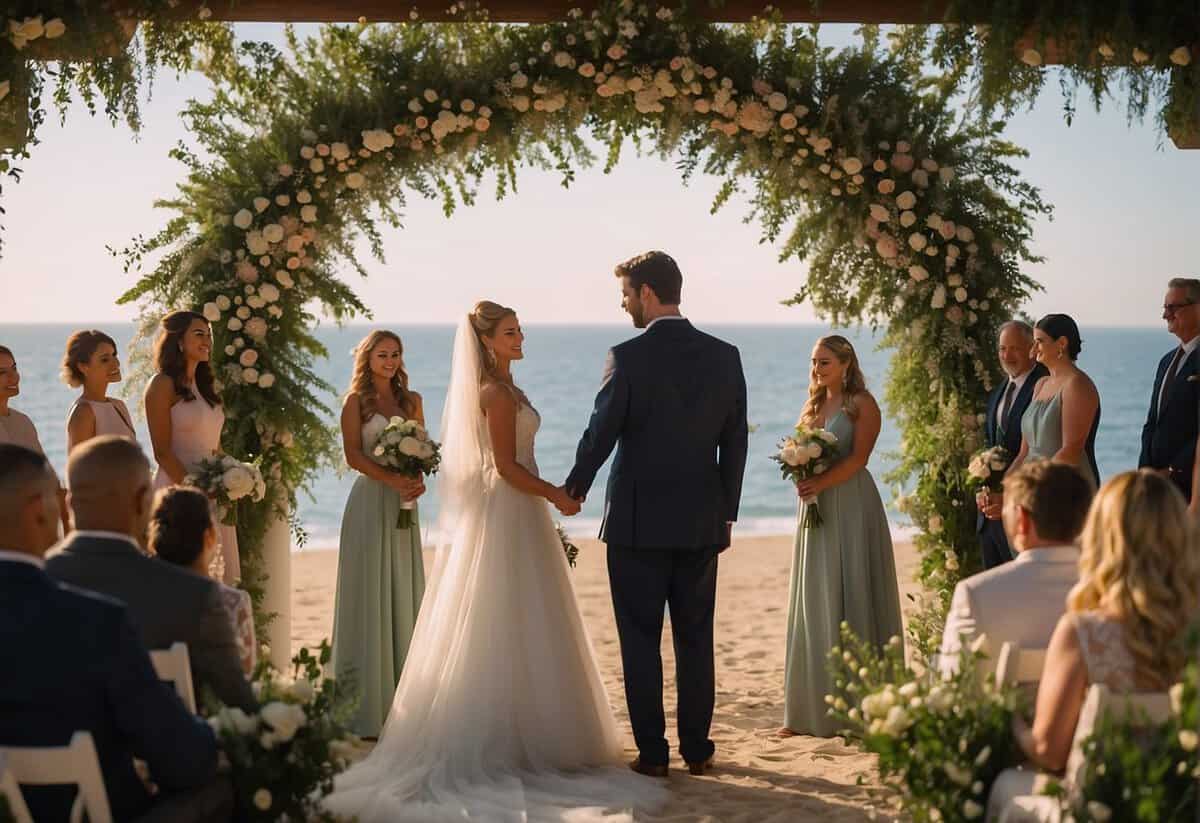
The exchange of vows is a central part of any wedding ceremony, and when it’s non-religious, you have the opportunity to write your own promises to each other. This can be a deeply personal and moving aspect of the ceremony where you share your love and commitment in your own words. Furthermore, special elements like music, readings, and rituals should be considered, which can add depth and character to your ceremony. From meaningful poems to symbolic actions, these components can make the ceremony feel intimate and special, providing lasting memories for you and your guests.
Key Takeaways
- Non-religious weddings allow for personalized and expressive ceremonies.
- Vow exchanges are an opportunity to share bespoke commitments.
- Including unique elements adds personal significance to your celebration.
Planning Your Non-Religious Ceremony

When planning your non-religious ceremony, it’s essential to focus on personalization and inclusivity. By carefully choosing an officiant, selecting a venue, and determining the role of family and friends, you can ensure that your secular wedding ceremony reflects your values and love story.
Choosing an Officiant
Your officiant sets the tone for your ceremony, so it’s crucial to select someone aligned with your vision. Consider a professional celebrant who specializes in secular ceremonies, or you might ask a close friend or family member who is articulate and comfortable speaking in public. Check your local laws to ensure they can legally officiate.
- Professional Officiant: Often has a repertoire of ceremony templates and can guide the structure.
- Friend or Family: Adds a personal touch and may need to get ordained online.
Selecting the Venue
For a non-religious ceremony, you have the freedom to choose from a variety of venues that reflect your personalities. From outdoor parks to historic buildings, select a space that feels right for you both. Here are a couple of venue ideas to consider:
- Natural Settings: Beaches, gardens, or mountain vistas can provide a stunning backdrop.
- Cultural Sites: Art galleries, museums, or theatres can add an elegant or eclectic flair.
The Role of Family and Friends
Incorporating family and friends into your ceremony can make it more meaningful. Assign roles that suit their personalities and comfort levels, such as readings, ushering, or even performing music. Remember, your ceremony is a celebration of your union supported by the love of those around you, so involve them in ways that are special to you.
- Readings: Poems, literature excerpts, or personal anecdotes that resonate with your relationship.
- Musical Performances: A family member singing or a friend playing an instrument can be touching.
- Rituals: Unity candles or sand ceremonies allow for a physical representation of your union.
Designing the Ceremony Script
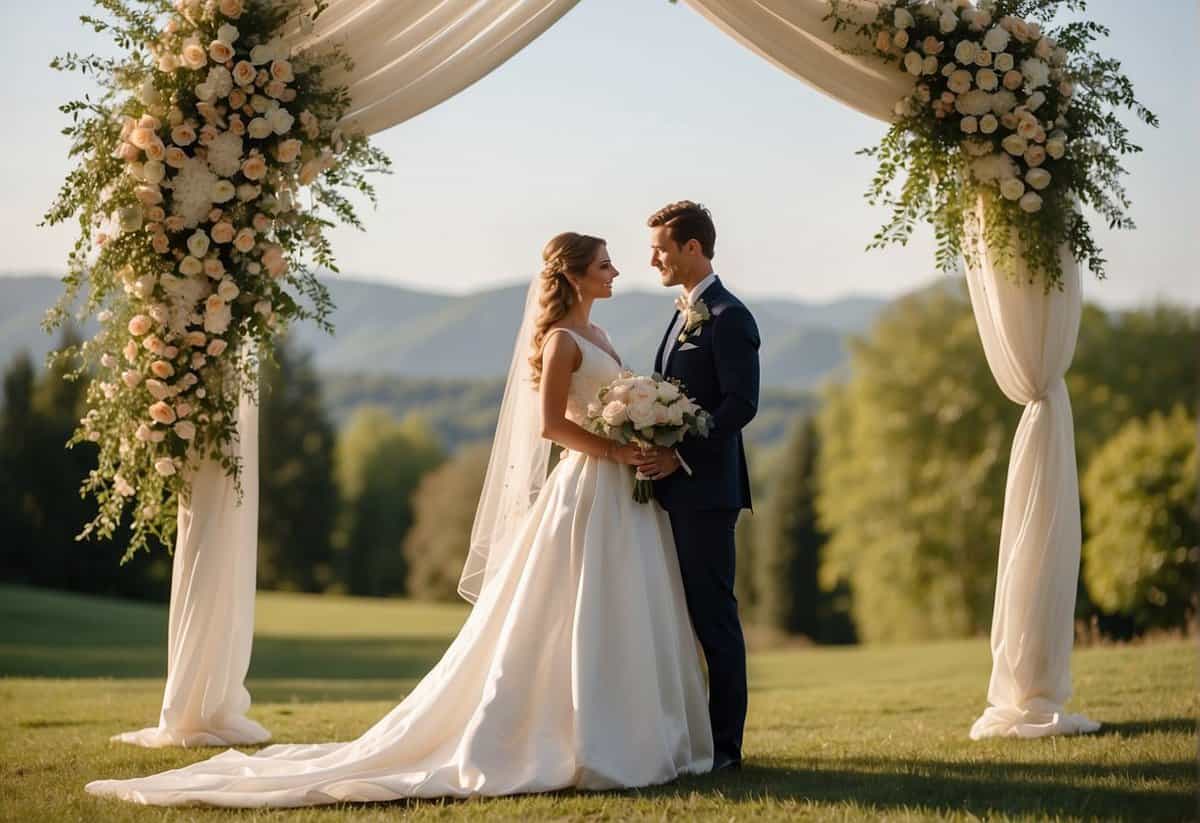
Crafting a non-religious wedding ceremony script is an opportunity to express your unique love story and personal values. The words you choose should reflect the deep commitment you’re making and the joy of the occasion.
Writing Your Own Vows
Your personal vows are the heart of the ceremony script. When you write your own vows, focus on the specifics of your love and commitment. It’s your chance to promise not just eternal love, but to acknowledge that dependence is mutual and the obligation is reciprocal. Consider these examples to reflect your sentiments:
- “I vow to champion your dreams and protect you from your fears.”
- “I promise laughter for the good times and strength for the challenges.”
Remember to weave in humor and friendship to truly personalize your vow exchange.
Incorporating Readings and Music
Non-religious wedding ceremonies can be enhanced by readings and music that hold special meaning to you as a couple. Choose from favorite poems, literature, or even song lyrics that illustrate your relationship. Here’s a brief layout for this part:
- Select a wedding reading that highlights your values and perspective on love.
- Incorporate music selections that resonate with your shared experiences and future hopes.
These elements add layers to your ceremony, making it a more comprehensive reflection of your bond.
Creating a Personalized Processional
Your processional is the grand beginning of your ceremony. To personalize it, consider the order in which you and your loved ones will walk down the aisle. Some ideas include:
- Unique music choices: Pick a song that stirs emotion and represents your journey.
- Order of appearance: Mix up the traditional order to include friends and family in a way that honors your closest relationships.
Craft a processional that feels right for you, focusing on the excitement of what’s to come: a celebration of mutual support and a declaration of your personal vows.
The Vow Exchange
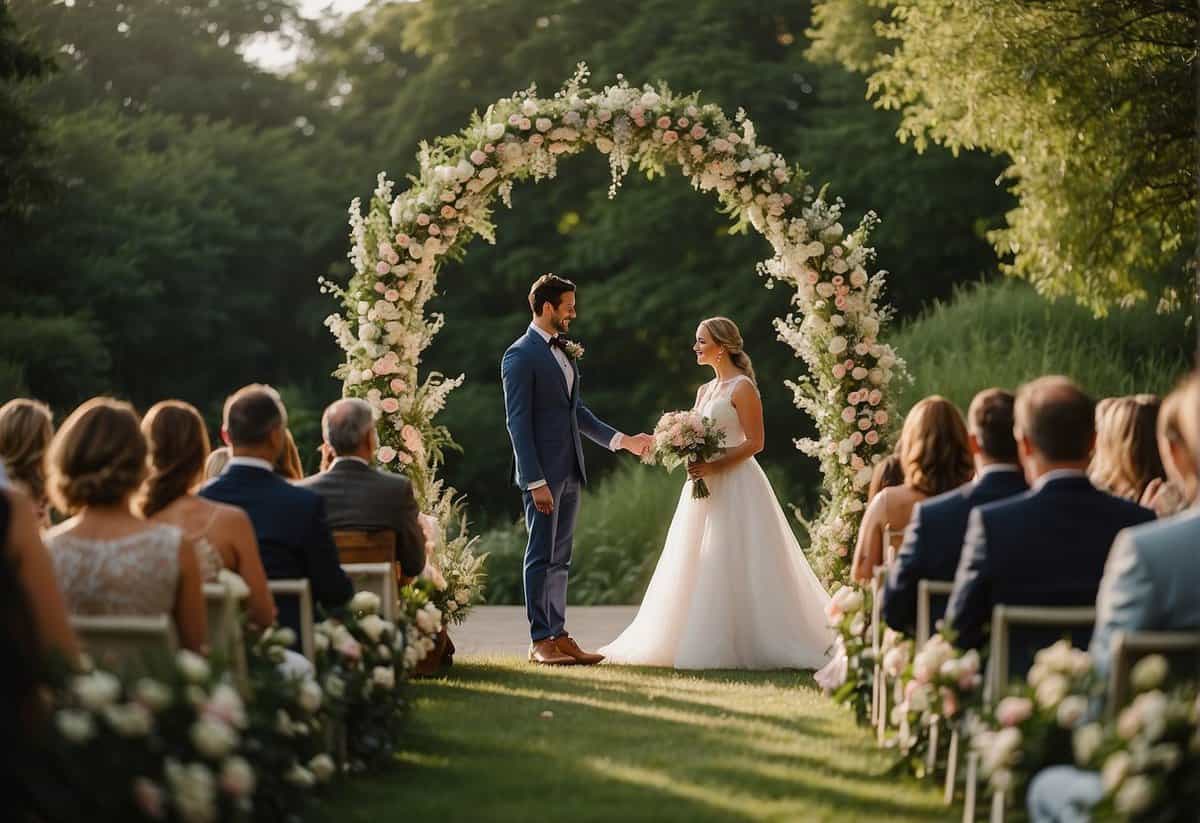
In a non-religious wedding ceremony, the exchange of vows is the heart of your marriage ceremony. It’s a deeply personal moment where you and your partner commit to each other with words that are specially chosen to reflect your relationship.
Declaration of Intent
Before you dive into the promises that will bind you together, the declaration of intent serves as an affirmation of your willingness to enter into this marriage. It’s a simple yet profound step where you declare, in front of your loved ones, that you’ve chosen this path freely. It may sound like:
- You: “Do you take [Partner’s name] to be your lawfully wedded partner?”
- Partner: “I do.”
Exchange of Rings
Following the vows comes the exchange of rings. These bands are not just jewelry; they’re symbols of the commitment you’ve vocalized. As you place the ring on your partner’s finger, consider saying:
- You: “With this ring, I thee wed; wear it as a sign of my everlasting love.”
- Partner: “As I place this ring on your finger, it encircles my love for you.”
Embracing personal touch in your vows and the unity ceremony can make these traditions uniquely yours. While you’re crafting your ceremony, infuse your personality into every detail, from the vows to unique rituals that resonate with your story.
Special Ceremony Elements
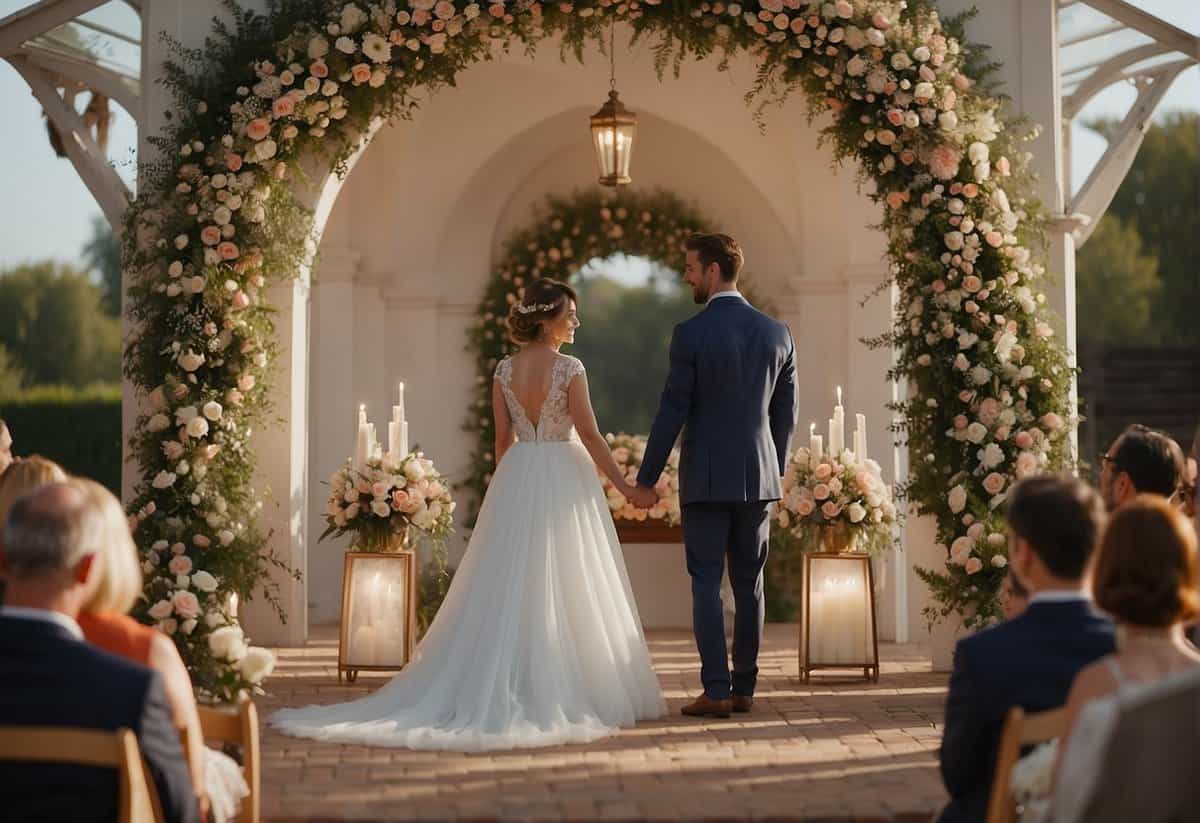
Incorporating unique touches, such as humor and personal rituals, truly makes your wedding ceremony stand out. Here, you’ll discover how to infuse your personality into your special day and learn about various unity ceremonies that non-religious couples can include to symbolize their togetherness.
Incorporating Humor and Personality
Your wedding ceremony doesn’t have to be a solemn affair—infusing humor can reflect your personality and create an unforgettable experience. Consider adding a whimsical reading that resonates with your relationship or crafting vows with playful anecdotes that will bring smiles to your guests. By doing so, you’ll ensure your ceremony is a heartfelt reflection of you.
Unity Ceremonies and Other Rituals
A unity ceremony is a beautiful way to represent the joining of two lives without religious connotations. Here are a couple of ideas:
- Sand Ceremony: Both of you pour different colored sand into a single vessel, symbolizing your combined lives.
- Planting a Tree: Symbolize your growing love by planting a sapling that will flourish as your marriage does.
These unique rituals not only add a personal touch but also create a sentimental moment during your ceremony. By choosing a ritual that resonates with you, such as the Super thorough and NON-religious wedding officiant script recommends, you’re sure to make your non-religious ceremony meaningful and offbeat.
Concluding the Ceremony
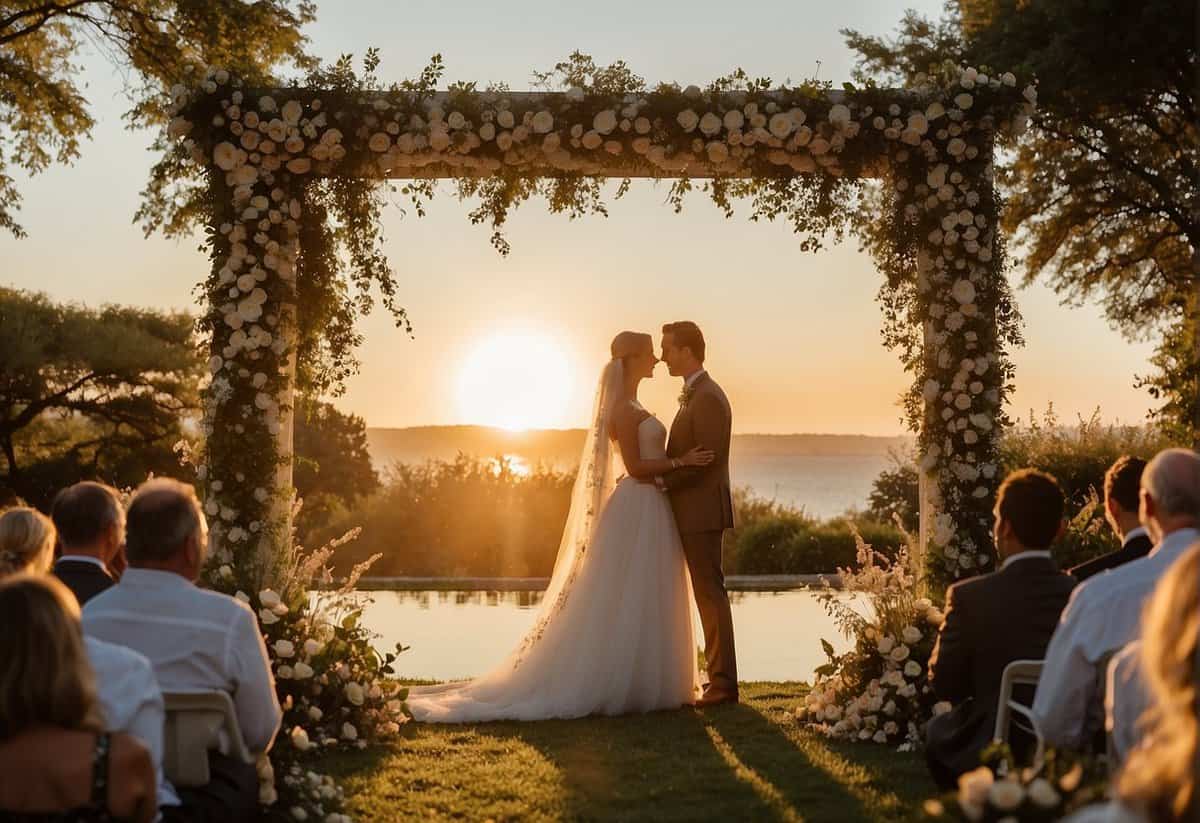
As your non-religious wedding ceremony draws to a close, it’s key to end on a high note that reflects the joy of the occasion. The pronouncement officially marks the beginning of your journey as a married couple, while the handling of the marriage license is the legal seal on your union.
Pronouncements and Celebratory Toasts
With the final words of the secular ceremony script, the officiant will deliver the much-anticipated pronouncement, declaring you married in the eyes of your community. This hallmark moment is your cue for a vibrant celebration. Immediately following the pronouncement, it’s a wonderful time for celebratory toasts. A personal touch can be added here, as anyone significant in your life can step forward to raise a glass. These toasts are often a heartfelt reflection of your relationship and the life you are embarking upon together.
- Toast by Best Man or Maid of Honor
- Toast by a Parent or Close Family Member
- Group Toast led by Officiant
Securing the Marriage License
After the emotional high of the pronouncement and toasts, don’t forget the practical yet crucial step of securing the marriage license. This document legally validates your union, and it often requires signatures from you, your partner, the officiant, and the witnesses. Here are the steps to ensure you cover this formality:
- Sign the License: Make sure to do this after the ceremony.
- Witness Signatures: Have two witnesses sign, validating the ceremony.
- Legal Filing: The officiant or a designated person should file the license with the local government office.
Remember, these final acts are not just formalities but are imbued with significance, legally and symbolically closing the chapter on your wedding ceremony.

